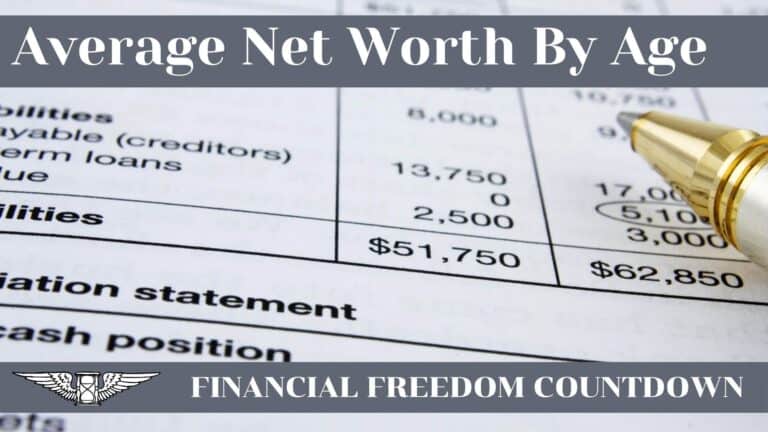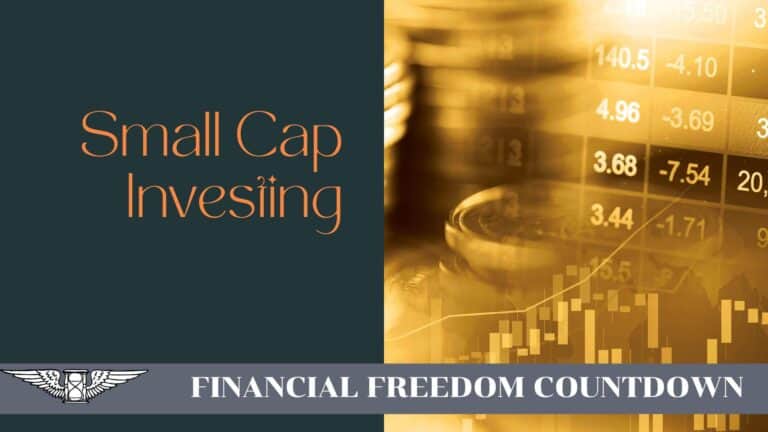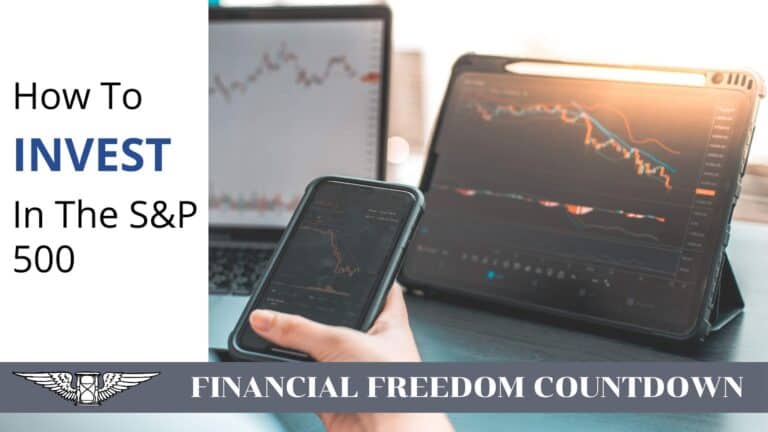ESPP: Are Employee Stock Purchase Plans Worth It?

An ESPP, or Employee Stock Purchase Plan, is a benefit some public companies offer to their employees. It allows employees to purchase company stock at a discounted price. Let us tackle the factors which make ESPP a valuable perk and whether or not you should participate.
What Is an Employee Stock Purchasing Plan (ESSP)?
An ESSP allows you to buy your company’s stock at a discounted value, usually around 5-15% of the fair market price.
For example, if your company stock is trading at $100, and the plan discount is 15%, you will receive stocks at $85.
If your company has an ESPP, you can buy stock and potentially sell it for a 15% guaranteed profit immediately. Alternatively, you can keep the stock and sell it at your chosen time. In either case, you can ultimately increase your profit by buying the stock at a discounted rate.
Of course, not every company offers an ESSP. A company must be publicly traded and have a qualified or non-qualified plan to provide an ESSP; even then, only about half of all publicly traded companies make that offer.
The most significant advantage of an ESSP is unquestionably the ability to purchase company stock at a discounted rate.
How Does an ESPP Work?
Keep in mind that an ESPP is slightly more complicated than purchasing stock through a stock trading app or a website, and there are a few things you have to understand.
First, every stock has an offering period which is the amount of time your employee contributions are deducted from your paycheck via payroll deductions and kept aside by the company to make a purchase.
Purchases are made during a purchase period and on a specific purchase date, which occurs at the end of the offering period. Your purchases will come out of your employee contributions. Your company will keep records and send them to you.
The stocks are purchased at the purchase price, which is the fair market value of the stock on the purchase date, less the discount.
Some ESPPs also have a concept of the lookback period. The benefit of the lookback period is that your discount can often be more significant than 15%.
Assuming the ESPP offers a 15% discount and the lookback period is six months in both scenarios.
Scenario 1
If the company stock is trading at $100 on Jan 1st
and trading at $110 on Jun 30th, you will receive the stock at $85 on Jul 1st.
As a result of the favorable lookback period, your profit is $110-$85 = $25 per stock, which is more than 15%.
Scenario 2
Conversely, if the company stock is trading at $130 on Jan 1st
and trading at $100 on Jun 30th, you will receive the stock at $85 on Jul 1st.
The lookback provision compares the stock’s fair market value at the beginning of the offering period to the stock’s fair market value on your purchase date. Your purchase price is the lower of the two prices.
What Are the Benefits of an Employee Stock Purchasing Plan?
Employee stock purchase plans offer some truly positive benefits that often make them well worth investing in. These include:
Discounted Purchase Price
There is no question that the most significant benefit of any employee stock purchasing plan is the ability to purchase stock at a discounted price. Getting this stock at the correct offering date will allow you to make a relatively significant profit.
Overcome Investing Hurdle
ESPPs typically allow you to overcome the hesitancy of investing in stocks. Buying your company’s stock via payroll deductions is an easy step that can make you comfortable investing.
Favorable Tax Treatment
An ESPP comes with favorable tax treatment in qualified plans. Such beneficial taxation occurs because of Section 423 of the Internal Revenue Code.
What Are the Potential Drawbacks of an Employee Stock Purchasing Plan?
While employee stock purchase plans have some outstanding advantages, they are not entirely without disadvantages and potential problems.
Taxes
While the purchase of shares via an employee stock purchasing plan (ESPP) is not taxed when you make the purchase, they are taxed as ordinary income when you sell the stocks within two years of the offering date. You’ll have to consider any taxes as part of your overall purchase.
Fortunately, if you sell the stocks after this period, they are taxed as long-term capital gains. It can reduce the amount of taxes that you pay on them. Of course, this may also skew your portfolio and force you to take a less-than-favorable position to protect against higher taxes, so this is something that you have to keep in mind when buying or selling stocks via an ESPP.
Regulations
While ESPPs can boost your portfolio, they can also require that you pay attention to some somewhat confusing and obtuse tax laws and regulations. There are paperwork requirements, requirements about how long you can hold the taxes, impacts on your portfolio, and more. As such, you have to pay more attention to regulations with an ESPP than you would with another stock.
Purchase Limits
Before you get ready to take every cent you have and invest it in an ESPP, then sell the money immediately, remember there are limitations on possible purchases of an ESPP. The IRS sets a $25,000 limit on an ESPP each calendar year. It is also very likely that your employer will set a limit. These limitations often hit around 10-20% of the total salary. You’ll have to remember that you can’t spend all your money trying to turn a quick buck on ESPPs.
Opportunity Costs
An ESPP can offer a significant discount and a chance to make a tidy profit. However, there may be opportunity costs.
As great as an ESPP can be, it is always possible that you can make more money by steering your investments to other alternative investments or even real estate investing. If you spend all of your available cash on an ESPP, you ultimately lose the chance to make more or better gains elsewhere.
Comparing stocks vs. real estate gives real estate an unfair advantage on account of leverage. Of course, you need to consider the real estate investment risks.
Also, real estate involves some grunt work. It is not as simple as investing in the S&P 500 unless you consider real estate crowdfunding or note investing.
Why Do Companies Offer ESPPs?
ESPPs have been around for decades. Publicly-traded companies have used them for many reasons, including:
- Retention & Recruitment: In this day and age, it has become increasingly hard to retain and recruit high-quality talent. ESPPs can provide a significant incentive for employees to work for a company. When used correctly, an ESPP can be a substantial bonus to employees as an added compensation benefit. Of course, an ESPP only applies to current employees. Employees must keep working for a company to participate in the ESPP.
- Provide a sense of employee ownership: The intangible impacts of an ESPP can’t be discounted. When working for a company, employees are likely to feel more vital about their place of work if they have a literal sense of ownership. An ESPP allows an individual to own a small piece of their workplace. This enhances their positive feelings towards their place of work. Some studies have found that employees increase their performance when they own a portion of their company.
- Increase capital within a company: By offering an ESPP, a business can increase its cash inflow, using that money to expand operations, make purchases, or fund research. This may be a relatively minor benefit for larger companies, as the amount of money that comes in via an ESPP will likely be a proverbial “drop in the bucket.” For smaller companies, this may be a significant amount.
- Tax deductions: The favorable tax treatment of an ESPP impacts a business in more ways than one, as there are provisions within the corporate tax code that provide incentives and tax breaks for companies that offer an ESPP. As such, it may be worth it for a business to offer this benefit.
What Should I Do if I Am Interested in ESPP?
Remember that you can’t simply call your stock broker and make purchases within an ESPP. You can only make these purchases during an enrollment period through your company. Depending on your company’s ESPP plan, you can usually enroll in an ESPP once or twice a year.
The ESPP plan administrator or HR will send an email to enroll. Once you complete the paperwork, your ESPP purchase will come out of your salary through post-tax deductions.
There are often restrictions on who can own an ESPP. For example, rules often prohibit someone who owns more than 5% of a company from participating in an ESPP and using it to increase their position within a company. This doesn’t stop someone from buying more stock on their own, but it can prevent a founder from taking further advantage of such a program.
There are also often limitations that stop someone from investing in an ESPP if they have not worked for a company long enough. By enacting such a limitation, companies can ensure that a prospective employee doesn’t simply work for a company to take advantage of an ESPP, then leave after a quick sale.
You’ll also need to keep your long-term career plans in mind when making financial decisions, including how to best leverage your human capital. If you plan on leaving your company shortly and pursuing a low-stress retirement job, you should consider not locking in your money during the offering period for the ESPP.
Keep in mind that any stocks you purchase are yours. You don’t have to return the stocks if you leave a company. But, of course, you will lose access to future purchases.
Finally, make sure to consult with a tax professional about the tax advantages – or disadvantages – of investing in an ESPP. There are unquestionably tax advantages to purchasing stock from an ESPP, but you also want to consider the penalties that may occur when you ultimately sell stock.
Always subtract potential taxes when calculating your liquid net worth, so it’s essential to keep this in mind before making an ESPP purchase.
Accumulating generational wealth is critical for any individual. An employee stock purchase plan can help individuals that work for public companies to increase their average net worth. With proper planning and research, you can be well-suited to take advantage of employee benefits, including ESPP.
FAQs on Employee Stock Purchase Plan
What happens if I no longer want to participate in my company’s ESPP?
Because participation is voluntary, companies usually let you withdraw your investment during the offering period. You will receive a refund for any contributions, and you can opt to enroll again at the next enrollment window. Check with your employer’s plan for specifics on withdrawing from the program, refunds, or re-enrollment.
Companies will refund any contributions made during the offering period as part of your exit package.
The stocks you purchase through ESPP belong to you, and you can decide to keep or sell them. ESPPs are unlike RSUs or stock options, which typically have different vesting criteria.
How much should you contribute towards ESPP?
Ideally, if you are selling the stocks received through ESPP immediately, you are locking in a substantial profit, so it would be prudent to contribute the maximum per the plan. The IRS limit is $25,000 every calendar year.
Of course, your contribution to ESPP depends on your financial goals. Also, since contributions are after-tax, you should evaluate the benefit of maxing out your tax-advantaged accounts such as 401(k), HSA, and deferred compensation.
What is the difference between qualified and non-qualified ESPP?
Qualified plans meet the Section 423 criteria of the Internal Revenue Code and provide a favorable tax treatment based on the holding period. Qualified plans need to be approved by the shareholders and have a restriction on the maximum price discount.
Non-qualified plans do not need shareholder approval and have no discount price restrictions. However you pay more in taxes in non-qualified plans.
What are the tax advantages of holding ESPP in a qualified plan?
Based on the IRS, for a qualifying disposition, the employee must hold the stock for at least two years from the grant date and one year from the purchase date. If you satisfy the qualifying disposition period, you pay only long-term capital gains (or loss) on the difference between the sale price and the stock’s fair market value on the purchase date.
If you do not hold the ESPP stock for the desired holding period, it is considered a disqualifying disposition of the stock.
So, if you sell the stock as soon as you receive it, you will pay an ordinary income tax rate. But selling it as a qualifying disposition will result in lower long-term capital gains.
Although we should focus on tax-saving strategies, do not let the tax tail wag the dog. I have always sold my ESPP the day I received it.
Since tax laws are complex and always changing it is best to consult a CPA.
Although it is a personal decision, there are several advantages to selling your ESPP shares on the day of purchase.
1. You lock in the company’s discount (up to 15%).
2. Provides diversification. Since your human capital is tied to the company, you want to avoid placing your income-producing assets with the same company. Many who worked for Enron lost not only their job but also their financial savings.
3. In the long run, the company stock price could dip way lower than whatever ESPP discount you received, wiping out your profits and even resulting in a loss.
Of course, it is also possible that your company could be a moonshot stock like the next Tesla, and it would be better to hold on to the ESPP stocks. Since no one can predict the future, the risk-reward always favors investing in index funds for diversification.

John Dealbreuin came from a third world country to the US with only $1,000 not knowing anyone; guided by an immigrant dream. In 12 years, he achieved his retirement number.
He started Financial Freedom Countdown to help everyone think differently about their financial challenges and live their best lives. John resides in the San Francisco Bay Area enjoying nature trails and weight training.
Here are his recommended tools
M1 Finance: John compared M1 Finance against Vanguard, Schwab, Fidelity, Wealthfront and Betterment to find the perfect investment platform. He uses it due to zero fees, very low minimums, automated investment with automatic rebalancing. The pre-built asset allocations and fractional shares helps one get started right away.
Personal Capital: This is a free tool John uses to track his net worth on a regular basis and as a retirement planner. It also alerts him wrt hidden fees and has a budget tracker included.
Streitwise is available for accredited and non-accredited investors. They have one of the lowest fees and high “skin in the game,” with over $5M of capital invested by founders in the deals. It is also open to foreign/non-USA investor. Minimum investment is $5,000.
Platforms like Yieldstreet provide investment options in art, legal, structured notes, venture capital, etc. They also have fixed-income portfolios spread across multiple asset classes with a single investment with low minimums of $10,000.





